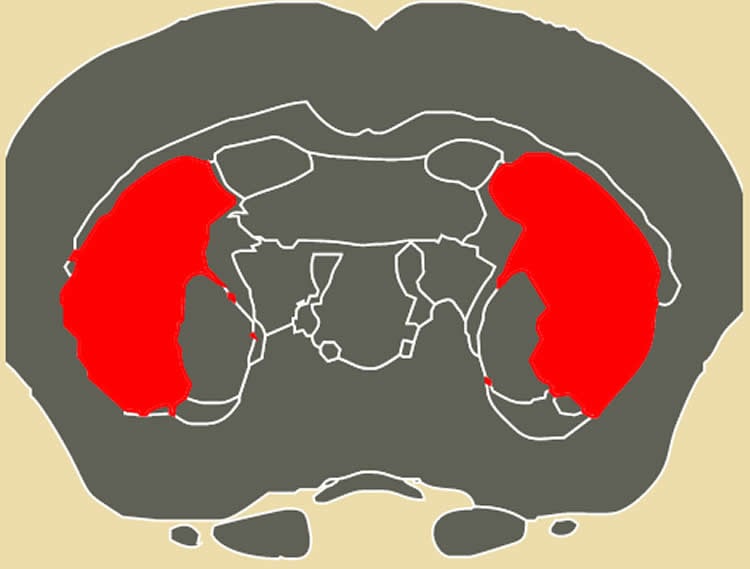A new study from Karolinska Institutet in Sweden provides insight on how the brain processes external input such as touch, vision or sound from different sources and sides of the body, in order to select and generate adequate movements. The findings, which are presented in the journal Neuron, show that the striatum acts as a sensory ‘hub’ integrating various types of sensory information, with specialised functional roles for the different neuron types.
“The striatum is the main input structure in the basal ganglia, and is typically associated with motor function”, says Principal Investigator Gilad Silberberg at the Department of Neuroscience. “Our study focuses on its role in processing sensory input. This is important knowledge, since the striatum is implicated in numerous diseases and disorders, including Parkinson’s disease, Huntington’s disease, ADHD and Tourette syndrome.”
The striatum is the largest structure in a collection of brain nuclei called the basal ganglia, which are located at the base of the forebrain. It is involved in motor learning, planning and execution as well as selecting our actions out of all possible choices, based on the expected reward by the dopamine system. Most research performed in the striatum is focused on the motor aspects of its function, largely due to the devastating motor symptoms of the related diseases.

However, in order to select the correct actions, and generate proper motor activity it is essential to continuously process sensory information, often arriving from different sources, different sides of the body and from different sensory modalities, such as tactile (touch), visual, auditory, and olfactory. This integration of sensory information is in fact a fundamental function of our nervous system.
In the current study, researchers Gilad Silberberg and Ramon Reig show that individual striatal neurons integrate sensory input from both sides of the body, and that a subpopulation of these neurons process sensory input from different modalities; touch, light and vision. The team used intracellular patch-clamp recordings from single neurons in the mouse striatum to show their responses to whisker stimulation from both sides as well as responses to visual stimulation. Neurons responding to both visual and tactile stimuli were located in a specific medial region of the striatum.
“We also showed that neurons of different types integrate sensory inputs in a different manner, suggesting that they have specific roles in the processing of such sensory information in the striatal network”, says Gilad Silberberg.
The work was funded by an ERC starting grant to Gilad Silberberg, and grants from the Knut and Alice Wallenberg Foundation, the Karolinska Institutet Strategic Research program in Neuroscience (StratNeuro), and the Swedish Research Council.
Contact: Gilad Silberberg – Karolinska Institute
Source: Karolinska Institute press release
Image Source: The Waxholm space template image is available at the Scalable Brain Atlas. The Scalable Brain Atlas was created by Rembrandt Bakker and Gleb Bezgin. The work is licensed GNU General Public License (GPL). We have adapted the image for use with this article
Original Research: Full open access research for “Multisensory Integration in the Mouse Striatum” by Ramon Reig and Gilad Silberberg in Neuron. Published online August 21 2014 doi:10.1016/j.neuron.2014.07.033






